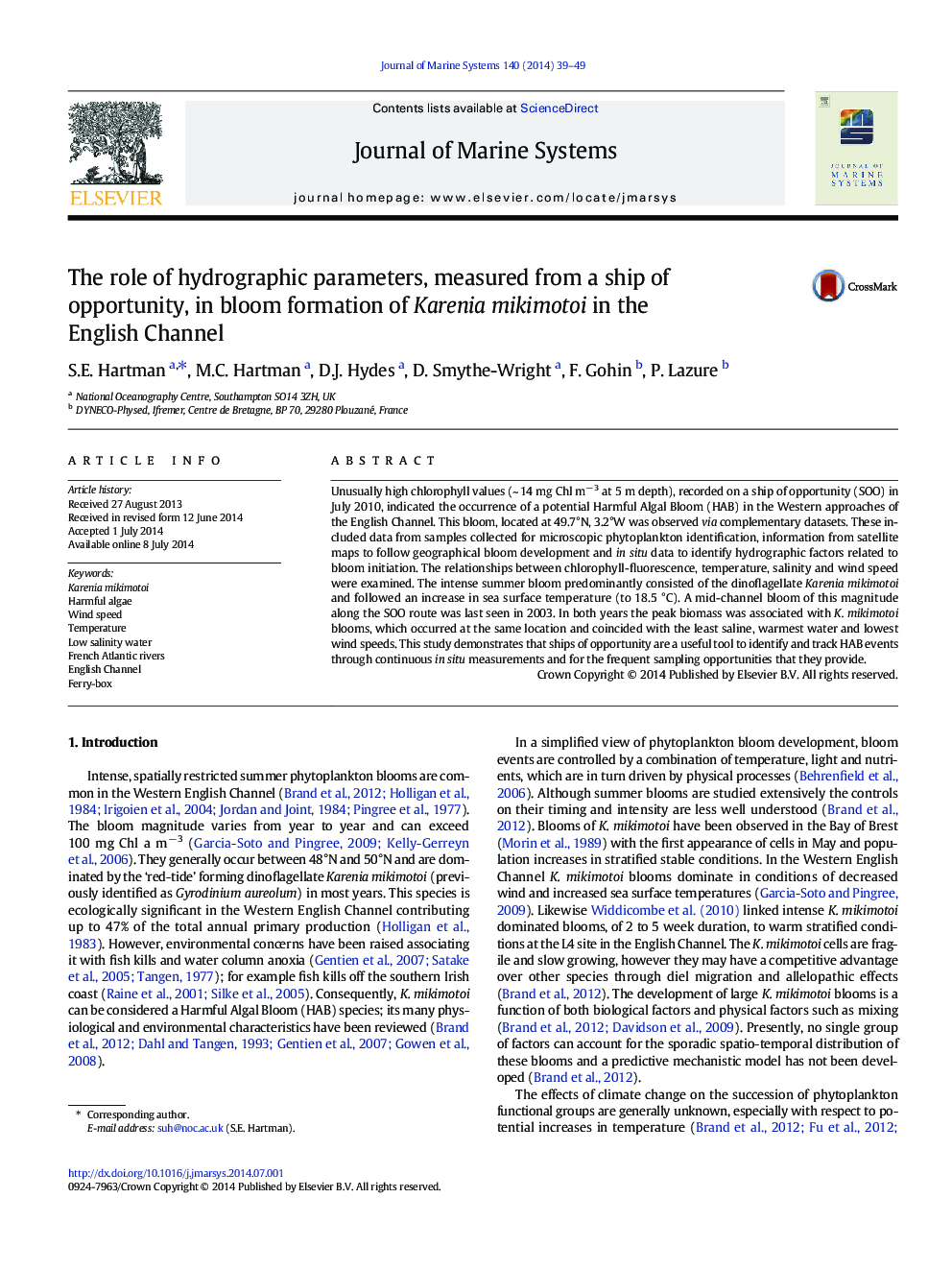| Article ID | Journal | Published Year | Pages | File Type |
|---|---|---|---|---|
| 6386877 | Journal of Marine Systems | 2014 | 11 Pages |
Abstract
Unusually high chlorophyll values (~ 14 mg Chl mâ 3 at 5 m depth), recorded on a ship of opportunity (SOO) in July 2010, indicated the occurrence of a potential Harmful Algal Bloom (HAB) in the Western approaches of the English Channel. This bloom, located at 49.7°N, 3.2°W was observed via complementary datasets. These included data from samples collected for microscopic phytoplankton identification, information from satellite maps to follow geographical bloom development and in situ data to identify hydrographic factors related to bloom initiation. The relationships between chlorophyll-fluorescence, temperature, salinity and wind speed were examined. The intense summer bloom predominantly consisted of the dinoflagellate Karenia mikimotoi and followed an increase in sea surface temperature (to 18.5 °C). A mid-channel bloom of this magnitude along the SOO route was last seen in 2003. In both years the peak biomass was associated with K. mikimotoi blooms, which occurred at the same location and coincided with the least saline, warmest water and lowest wind speeds. This study demonstrates that ships of opportunity are a useful tool to identify and track HAB events through continuous in situ measurements and for the frequent sampling opportunities that they provide.
Related Topics
Physical Sciences and Engineering
Earth and Planetary Sciences
Oceanography
Authors
S.E. Hartman, M.C. Hartman, D.J. Hydes, D. Smythe-Wright, F. Gohin, P. Lazure,
